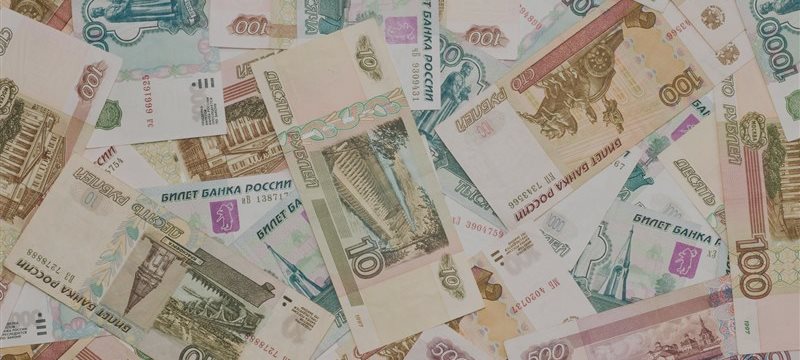
Russia: the biggest interest rate increase since 1998 still fails to prevent the ruble from hitting new anti-records
The Russian currency plunged for a seventh day, reversing its biggest advance in 16 years, as slumping oil outweighed Russia’s attempt to defuse a currency crisis with the largest interest-rate increase since 1998.
USD/RUB hit fresh highs of 69.20, and was last at 65.05 after initially falling to lows of 58.31 in early trade, as investors shrugged off a
surprise Bank of Russia decision to take its key interest rate to 17
percent from 10.5 percent. Ten-year government bond yields jumped more
than two percentage points to cross 15 percent for the first time.
Russian central bank Governor Elvira Nabiullina is struggling to restore confidence in a financial system facing its largest outflows in six years amid sanctions over Ukraine and tumbling oil prices. She’s also juggling prospects for the worst recession since 2009 while trying to prevent inflation from soaring further past 9 percent. The emergency rate move followed the ruble’s biggest slide in 16 years yesterday.
“Our traders are informing me that we see no bids to
buy rubles,” Per Hammarlund, chief emerging-markets strategist at
Skandinaviska Enskilda Banken AB, said by e-mail from Stockholm.
“I thought 17 percent would give them at least a month of breathing space. We next have to look at the experience in 1998-1999. We are also one big step closer to capital controls.”
Today Brent crude, the grade of oil traders look at for pricing Russia’s main export blend, tumbled 2.8 percent to $59.35 a barrel in London. Since the country derives about half of budget revenue from oil and gas industries, the weaker ruble is offsetting some of Brent’s 46 percent slide this year.
The costs of the depreciation in ruble, which hit a record low of 66.9995 today, are steep as inflation hovers at a more than three-year high and currency interventions drain the nation’s reserves. Russia’s cash pile has fallen to a five-year low of $416 billion as the central bank spent more than $80 billion this year trying to slow the ruble’s biggest annual retreat since 1998.
While the strain on reserves led the central bank to push forward plans last month for a freely floating ruble, policy makers spent more than $6 billion on interventions since OPEC unleashed a selloff in oil after its Nov. 27 decision to keep output unchanged.
“If such a rate hike, such a shot of medicine doesn’t help the ruble, then interventions won’t help either,” Artem Roschin, a foreign-exchange dealer at Aljba Alliance in Moscow, said by phone. “There’s no point in spending reserves.”
The boost in Russian borrowing costs, which happened in a surprise announcement just before 1 a.m. in Moscow, was the biggest since rates soared past 100 percent in 1998. The move takes the total increase in borrowing costs to 11.5 percentage points since President Vladimir Putin’s incursion into Ukraine’s Crimea peninsula in March.
Russia’s gross domestic product may shrink 4.5 percent to 4.7 percent next year if oil averages $60 a barrel under a “stress scenario,” the central bank said yesterday. Net capital outflow may reach $134 billion this year, more than double last year’s total.
“The ruble has erased gains because the oil is falling,” Vadim Bit-Avragim, a money manager
at Kapital Asset Management LLC in Moscow, said by phone.
“Right now it’s very hard to stop the panic since everyone is betting against the ruble. The central bank was too late with its move. Without oil and the economy stabilizing, the ruble won’t rise.”


